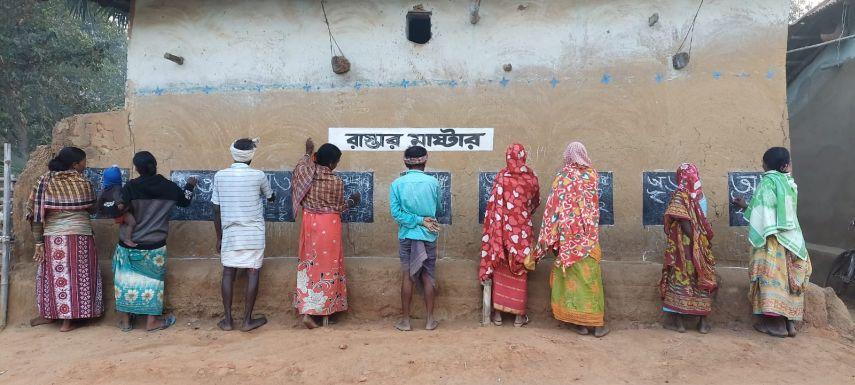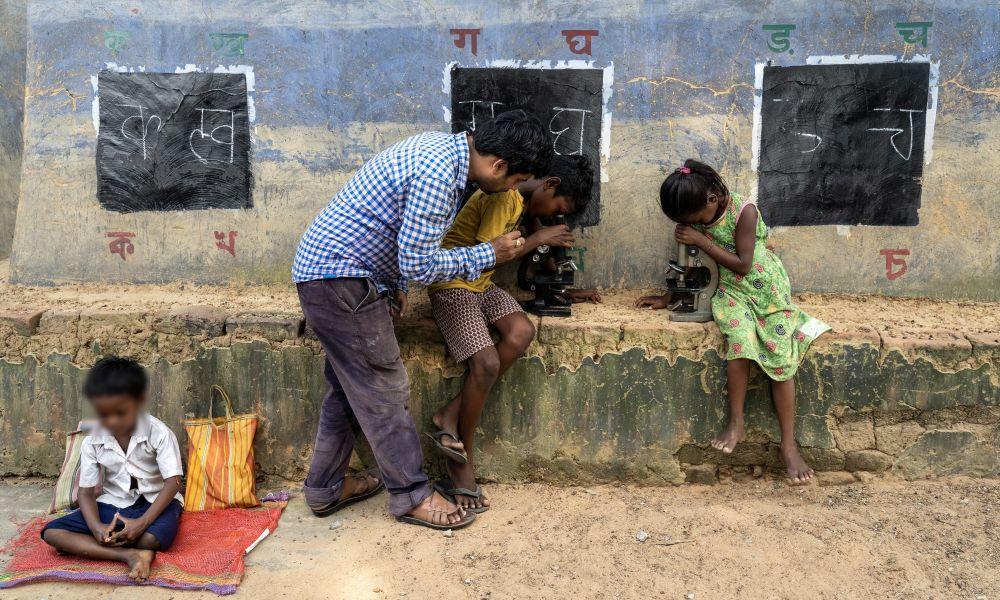During the COVID-19 pandemic, Deep Narayan Nayak ensured learning continued across villages by turning the walls of mud homes into classrooms for students. He has also helped mothers and grandmothers get educated to break the cycle of illiteracy in his locality.
The educator from Tilka Majhi Adibasi Free Primary School, Jamuria, Asansol, West Bengal is popularly known as Raster Master (Teacher of the street). He was recognised for his efforts by making it to the Top 10 finalists of the prestigious Global Teacher Prize 2023.
Nayak works towards bringing tribal children and those in socially and economically marginalised communities into mainstream education. To do so, he tries to understand the social and cultural obstacles that hinder their education. Today, his initiatives are implemented through the Rastar Master, Research and Development Project.
Many of the remote villages where Nayak teaches still don’t have electricity or primary health care centres. In particular, girls in the region get fewer opportunities to attend school.

[Image: Supplied].
Nayak comes from a humble background. His father was a daily labourer and a night guard. He lived with his parents, 4 sisters, and grandparents. He tells Teacher, as a child he was deprived of books and school bags. In his own family, there was a strong son preference –2 of his sisters left school due to financial pressure and they started working as domestic help, but Nayak’s parents continued his education as he was a boy.
When given the choice between schooling their son or daughter, Nayak has found that the majority of low-income families favour teaching their boy.
His motivation to work with tribal and marginalised communities from poor rural regions stems from his own personal experiences in childhood, both within his family and the community.
As a child, despite several challenges, he knew that it was only through education that he could provide for his family. While he was going to college, he worked as a tutor as well as a waiter in order to complete his graduation. He had to drop out of pursuing his MBA due to a lack of funds.
Mud walls into blackboards
Where Nayak works, child marriages are prevalent due to economic challenges and the parents of those children never attended school themselves. Because most of the children do not have books or slates, Nayak decided to convert the mud walls into blackboards. This meant every child could work on the blackboard and no longer required workbooks and pencils. He and his students could write the alphabets on mud walls.
He started teaching on the streets with 2 students and the community started calling him Rastar Master. He says his focus was on teaching girls, as he didn’t want their education to suffer (as was the case with his own sisters). Today, he reaches almost 10,000 students across 50 villages through this doorstep education model. Starting in West Bengal, his initiative has reached Jharkhand and even Bangladesh.
Teaching 3 generations
Nayak says that the model also has advantages for parents. Most of them worked as daily labourers or were engaged in agriculture and could not even sign their names. After the entire day of work, they were reluctant to attend adult schools, which were far away from their homes.
Now that the teacher was teaching at home, mothers joined their daughters to educate themselves. Nayak shares that the mothers would cook and simultaneously take lessons, which was not possible earlier. Even grandparents could join the classes. Plus, no one needed any books or worksheets.

[Image: Supplied].
Many times, children taught their parents and grandparents how to sign or do basic mathematics. This, Nayak points out, is the 3 generational learning model – along with the first-generation learner, parents and grandparents also had the opportunity to learn. Grandparents and parents shared their art, culture, and local stories with their children to preserve their culture.
Nayak’s model is also helpful in addressing teacher shortages. If 3 generations of learners are taught separately, more teachers are required to deliver classes. Nayak highlighted that without this model, it would take years to make an entire village literate.
Success stories
Discussing the impact on the children themselves, Nayak says one of his female students is now pursuing psychology honours at the Delhi University and another joined a nursing college. And one boy is studying engineering.
These students are inspirational role models for the present generation of students.
Nayak says, earlier, girls would migrate to faraway villages and cities due to marriage; now, they are migrating for the purpose of education and the realisation of economic dreams.
This story was shared by Deep Narayan Nayak in Bengali through an online interview. It was written in English by the author.



